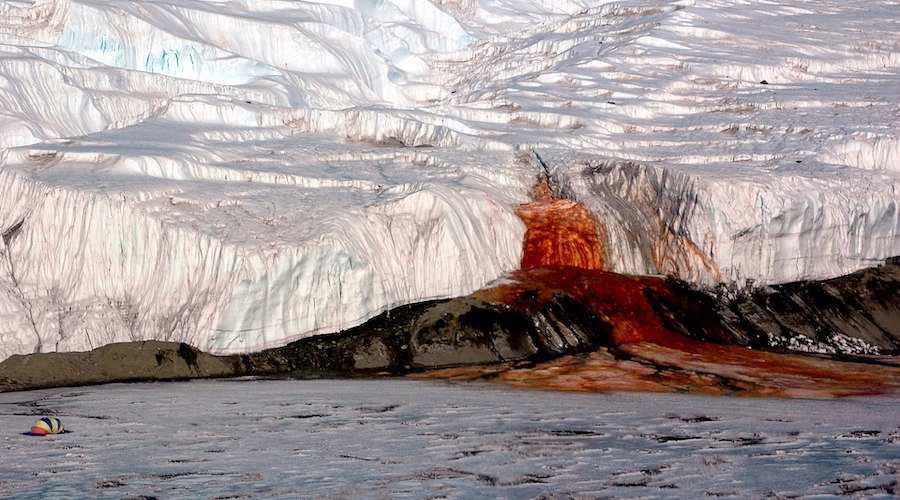Minerals from Antarctica give clues to potentially habitable locations on Mars

The brine flow deposits material that is the surface manifestation of a subsurface environment that hosts a thriving community of microbial life.
According to Sklute, initially, the brine is clear, but the deposit reddens with time on the surface, earning Blood Falls its name.
After scientists from the University of Tennessee collected samples of intermittent brine discharge, Sklute’s team tested them using Fourier transform infrared, Raman, visible to near-infrared, and Mössbauer spectroscopies. Samples were further characterized using microprobe and inductively coupled plasma optical emission spectroscopy for chemistry, and X-ray diffraction, scanning electron microscopy, and transmission electron microscopy for mineralogy, crystallography, and chemistry.
“We took dry samples and we analyzed them by shining light of different wavelengths at them,” Sklute said. “Each wavelength of light makes the bonds and atoms in a sample react in a different way. Using them all together, it lets us figure out what is there.”
The researcher explained that her team took each of the little pieces of information and pasted them together to form a whole image. Then they used different techniques to understand the bonds or atoms that comprise the samples.
“Combining these techniques, we have determined the detailed mineralogical assemblage of this Mars analog site and we have learned that the deposit is mostly carbonates and that the red color of Bloody Falls is from the oxidation of dissolved ferrous ions (Fe2+) as they are exposed to air, likely in combination with other ions,” the scientist explained. “Instead of forming ferric (Fe3+) minerals, which is what usually happens on earth, this brine turns into amorphous (no long-range structure) nanospheres containing iron and a bunch of other elements, like chlorine and sodium.”
Sklute pointed out that amorphous materials have been found to be ubiquitous in Gale Crater on Mars by the Curiosity rover.
“To date, we haven’t been able to determine what the amorphous material on Mars is made of. Finding what may be similar material in a natural environment on earth is really exciting,” she said. “We do not say this is a biosignature because it is not produced by the microbes but rather by the chemistry where the microbes live. It does, however, give us a road map for a place to look on another frozen world.”




